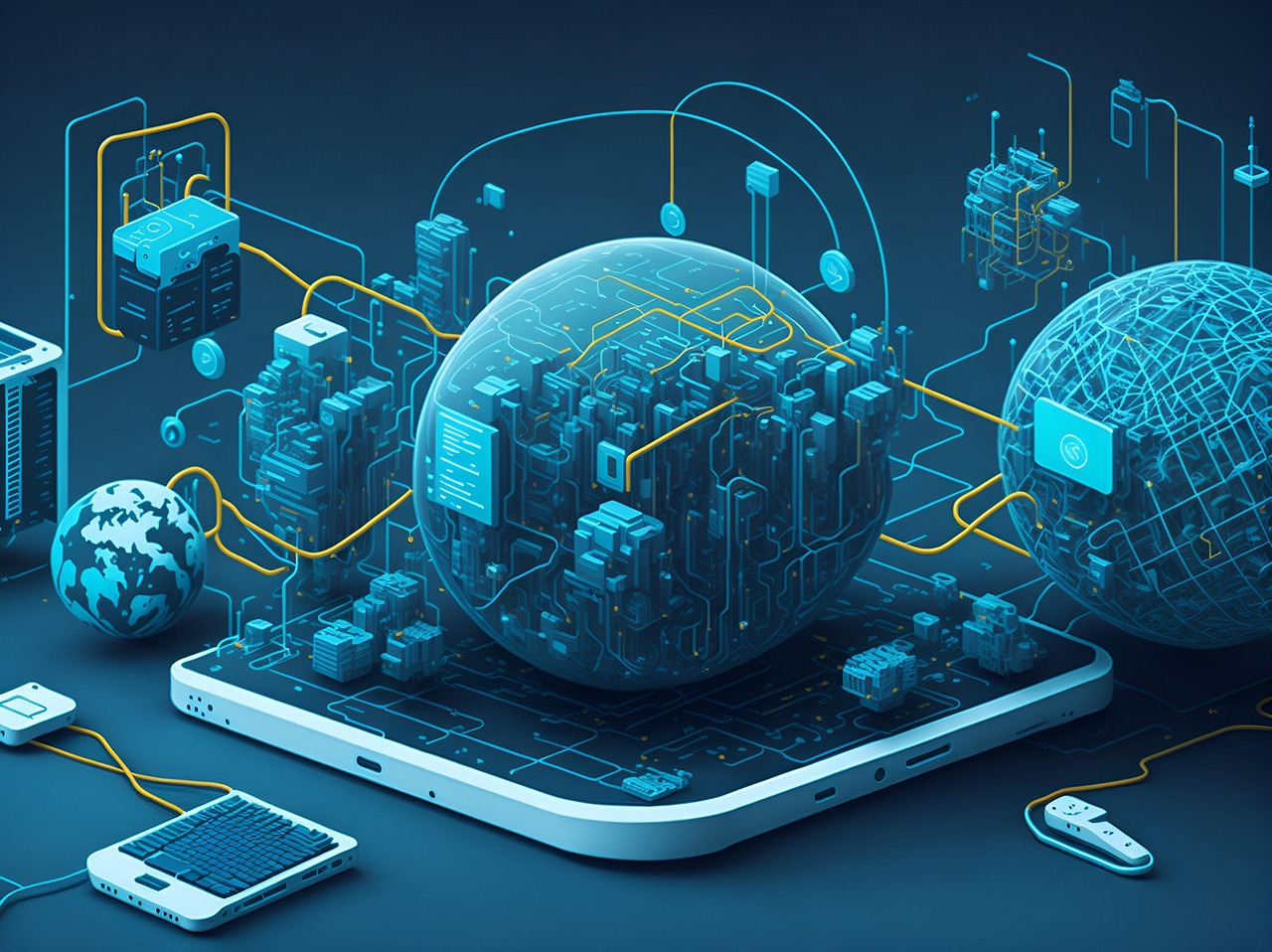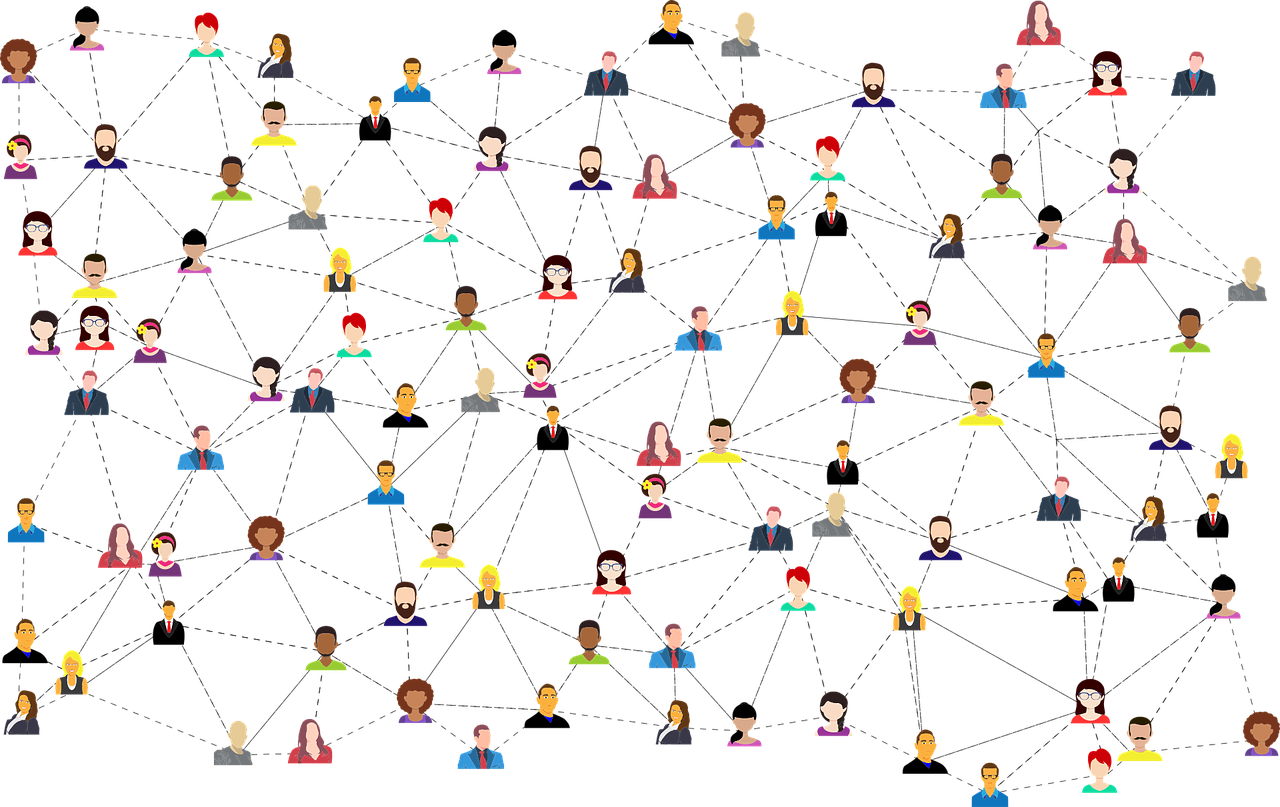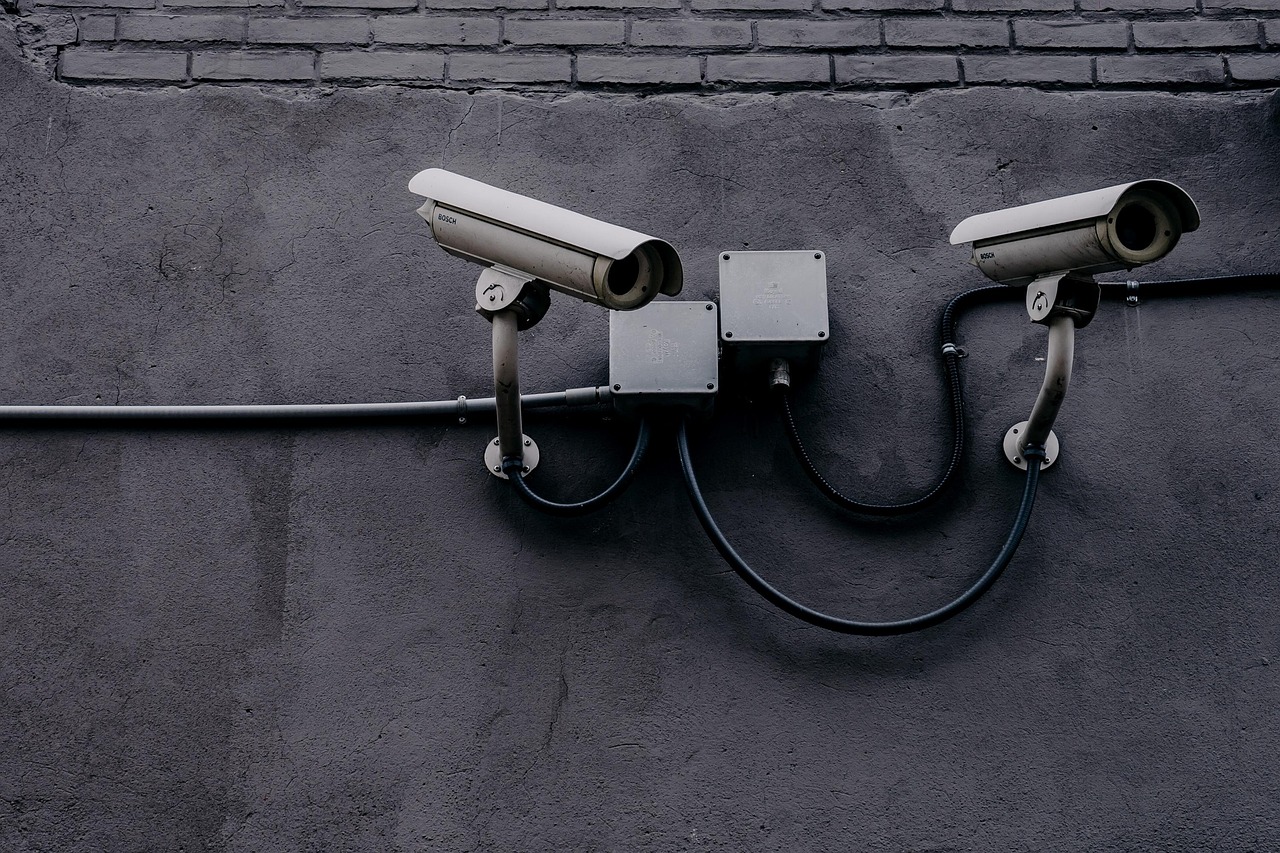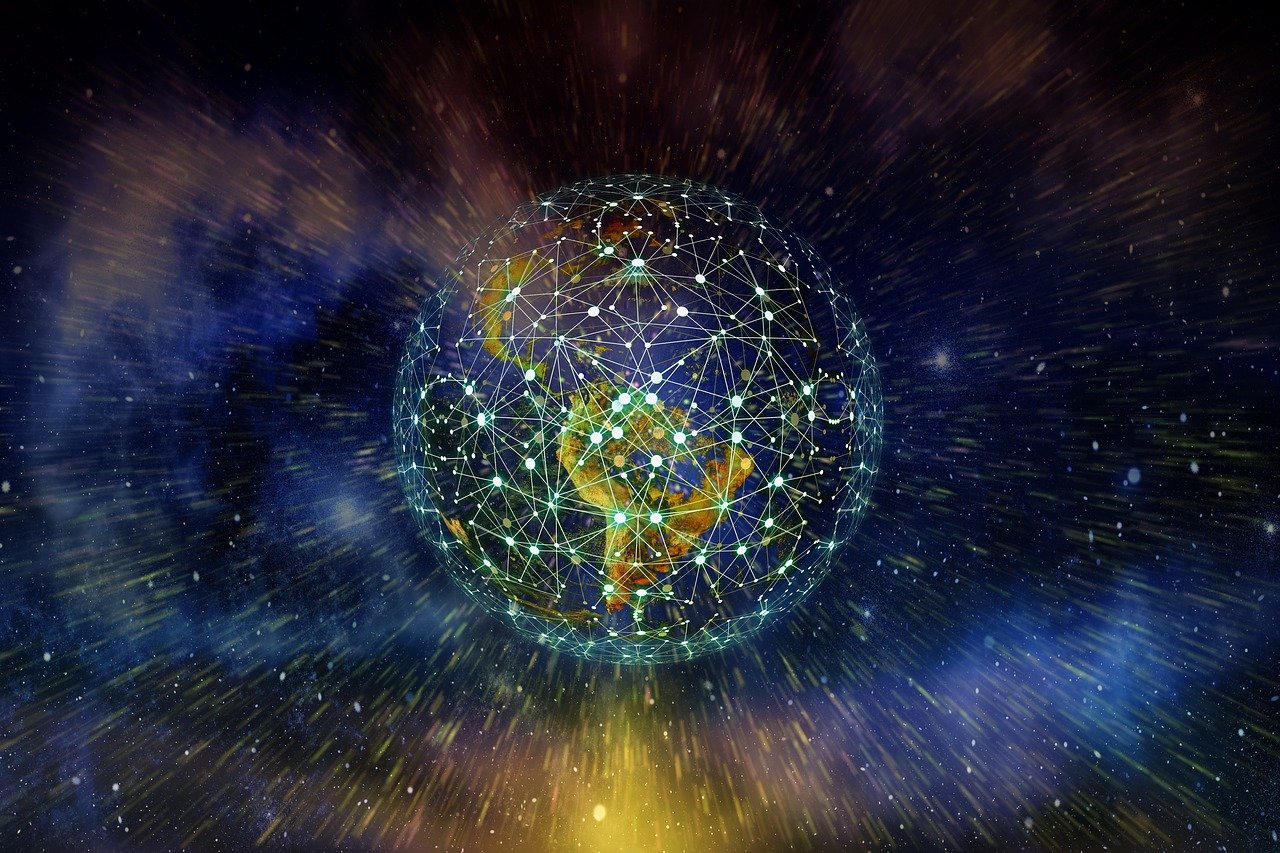We are a connected world, whether we like it or not. How did we get this way so quickly? And while the Internet has many positive things to offer, with the good also comes the not so good.

“Instruments that record, analyze, summarize, organize, debate, and explain information; that are illustrated, non-illustrated, hardbound, paperback, jacketed, non-jacketed; with foreword, introduction, table of contents, index; that are indented for the enlightenment, understanding, enrichment, enhancement, and education of the human brain through sensory route of vision—sometimes touch.” –Rancho, 3 Idiots, Vinod Chopra Productions, 2009
Back in about 1150, St. Bernard of Clairvaux gave us an aphorism that we constantly test just to prove he was right. That was when he reportedly wrote, “The road to hell is paved with good intentions.” He nailed it when it came to the Internet. It was going to be a beautiful research, educational tool. But instead, we built… this!
In the 1990s, we knew the Internet was going to be awesome because we worked with a bunch of people who had just gotten the contract to build out the western leg of a government project. The project would digitally connect West Coast educational institutions with those on the East Coast. It was a kick to go with Pushpendra (Push) Mohta and Manny Robles in the “company” VW as they connected high-speed backbone nodes around SoCal and digitally chatted with researchers and engineers on the East Coast. DARPA (Defense Advanced Research Projects Agency) thought it was so good it should be rolled out everywhere and put it in the hands of ordinary folks. The CERFnet name disappeared after a series of acquisitions, but Push, Manny, the team, and lots of other groups did such a great job that it became a vital part of the fledgling global Web hosting/Internet backbone business.
Great intentions but…
Despite all its negatives, organizations now say Internet connectivity is a necessity for everyone. Our son has only seen one of the early dial-up modems, and that was at the Computer History Museum. He can’t believe people actually used them to painfully communicate (45 Mbps transfer rates were lightning fast), search research databases, and connect people, data, businesses, and stuff.

As robust as it is, the Internet is in a precarious place and time. Technologically, it’s a masterpiece. The problem is its pernicious use. No one thought misinformation would be everywhere, or that marketing/ads would be in every nook and cranny of the Web, or that bots and AI “answers” would overpower all of the good the Net was supposed to offer.
How did we get here?
The backbone of global connectivity today is more than 900,000 miles of cable on the ocean floor that connects every continent to support our insatiable demand for communications and entertainment. While most people think of digital communications flying around the globe, 90% of the information flow is carried by undersea cables that are susceptible to accidental or malicious cutting that can interrupt/slow global personal and business communications.
The first cable was laid in 1858 between the US and Britain. Then, the telecommunications companies continued the task. Once Internet-based companies—Google, Amazon, Facebook, Microsoft, and others—learned there was a buck to be made, they took over the task of underwriting the costly work of connecting data centers around the globe. Today, they own, lease, and constantly repair more than half of the undersea bandwidth that supports more than 99% of the world’s digital traffic.
Even today, the cable laying continues, as ships with huge reels of fiber-optic cables cross the world’s oceans, laying cable across the ocean’s floor. They connect countries via the Internet to enable fast, reliable voice, data, and video communications. While the cables are designed to withstand the rigors of the ocean, regardless of the depth, accidental and malicious cuts do occur, and the cable ships have to find and repair the breaks… quickly.
Ships’ anchors, fishing equipment, natural disasters (earthquakes), sharks (they like the electronic buzz), and nation-states often interrupt communications—especially close to shore—requiring the rerouting of traffic and repairs. The unexplained break in the link between Northern and Central Europe late last year was just one of the “disruptions” that was repaired and is still being investigated, but NATO has its suspicions.
However, the Internet didn’t become indispensable until it hit land and was accessible in every office and nearly every home. The first broadband connection was with DSL/ADSL (copper wire buried or strung on poles) to connect homes, businesses, and services locally, nationally and internationally. Earlier copper wire cables are still in place, providing reliable communications; but it has been replaced as the data pipeline of choice. Today, just about anyone who wants it has broadband Internet connectivity, and service providers are turning from slower copper to high-speed fiber connections that can handle more data faster and more economically.

It was great. You could conduct business from home to office, buy stuff online for delivery to your home, and most importantly, express your brilliance on websites so people could call you a dumb SOB… or worse. Oh yeah, the social media sites have mined all of that information/discussion and then sold it to folks.
But something was missing… of course, a way to communicate once you left the office or home. BAM! The mobile phone was introduced, which ultimately evolved into today’s smartphone. Now people could communicate/keep track of stuff on the g, no matter where they were at. We all know a phone was designed for people to actually talk to each other, but why talk to folks when you can send them pictures of your lunch or emojis or copy links of the latest “news” to prove a point?

Folks didn’t simply need connections, they needed fast connections, so telcos advanced their delivery service from 1G (1–2 Mbps) to today’s 5G (10–20 Gbps). We realize the industry is already promoting how great 7G is going to be, but 5G is good enough. Some folks would love to have even 5G, but that’s still a long way off.
Despite what your kids (and telcos) like to say, the best and most reliable high-speed performance is with broadband connections, even though performance varies by where you’re located. According to Data Wrapper, countries with the fastest broadband download speeds include Singapore (153.85 Mbps), Iceland (147.51 Mbps), Hong Kong (133.94 Mbps), and South Korea (127.45 Mbps). The US is lower on the list, at 75.94 Mbps, ranking below countries like Romania, Hungary, Macau, Sweden, Netherlands, Switzerland, and Lithuania.
Despite what your kids (and telcos) like to say, the best and most reliable high-speed performance is with broadband connections, even though performance varies by where you’re located. According to Data Wrapper, countries with the fastest broadband download speeds include Singapore (153.85 Mbps), Iceland (147.51 Mbps), Hong Kong (133.94 Mbps), and South Korea (127.45 Mbps). The US is lower on the list, at 75.94 Mbps, ranking below countries like Romania, Hungary, Macau, Sweden, Netherlands, Switzerland, and Lithuania.
Nevertheless, their efforts are keeping pace with the on-the-go needs of the population. Now you can have fast connectivity no matter where you are. And the major benefactors of all of this connectivity aren’t the billions of people at home or on the go. We—the 5.2 billion-plus people globally—are connected to the Internet and, more specifically, social media, 24/7. You know, those superb social media services—YouTube, Bluesky, Reddit, Snapchat, TikTok, Alibaba, Tencent, Baidu, and other “unfriend me” folks around the globe—that emerged to enable people to come together and openly discuss stuff openly, honestly, and in a friendly environment.
What about privacy?
Great, just great. They just take every bit of data they can, sell it again and again to the highest bidder, and then… leave you hanging out to dry. As a number of people have said, privacy is dead, long live personalization. Your data is what keeps the Internet moving at full speed, and there are no signs it will abate. Sure, there are efforts to throttle the abuses, such as the EU’s General Data Protection Rules and California’s Consumer Protection Act (CCPA). The EU levied hundreds of fines against social media for non-compliance last year totally more than 5 billion euros. The companies promise never to do it again but then develop more creative ways to capture/use your data.
CCPA is just warming up on their fines, but you can bet they’re keeping a close eye on what the EU is doing.
As for the US and other countries, don’t expect a national privacy bill any time soon. Oh, sure, Russia fined Google for stuff that was critical of the government, but the fine was larger than the global GDP, so it would seem to be largely symbolic.

Countries like China have their own set of rules that take advantage of the 1.2 billion folks (77.5% of the population) connected to the Internet by using facial recognition and monitoring of everything citizens do. But they’re like folks nearly everywhere. When a young Chinese lady was asked on a CBS 60 Minutes show a few years ago about the constant surveillance and tracking, she noted, “I just don’t think about it.” It sort of summarizes what most people who spend an average of nearly 7 hours a day on the Internet feel, according to Hootsuite last year. Yes, that includes us because the Internet has become the backbone of business and personal communications—good and bad—everywhere.
Countries like China have their own set of rules that take advantage of the 1.2 billion folks (77.5% of the population) connected to the Internet by using facial recognition and monitoring of everything citizens do. But they’re like folks nearly everywhere. When a young Chinese lady was asked on a CBS 60 Minutes show a few years ago about the constant surveillance and tracking, she noted, “I just don’t think about it.” It sort of summarizes what most people who spend an average of nearly 7 hours a day on the Internet feel, according to Hootsuite last year. Yes, that includes us because the Internet has become the backbone of business and personal communications—good and bad—everywhere.
Even the world’s richest man, Elon Musk, was forced to comply with Brazil’s blackout ruling against X (Twitter), which barred the site from reaching an estimated 21 million people in the country when they refused to remove content that violated federal laws.
Okay, that was an ego schtick. But governments, companies, and regular folks are continually under attack by hackers/whackers, left/right/middle disinformation, cyberattack/manipulation, influence/misfluence noise, ads (lots of them), and the increased use of AI and machine learning to make almost anything appear to be real and logical.
Censorship, violence, and light-to-heavy data manipulation is felt by everyone who uses the Internet. Whether it’s governmental, organizational, or individual actions, you might feel they’re out to get your information… they are.
Censorship, violence, and light-to-heavy data manipulation is felt by everyone who uses the Internet. Whether it’s governmental, organizational, or individual actions, you might feel they’re out to get your information… they are.
To improve things, every country has funded a National Broadband Strategy to enable at least 75% of the population to be online and provide assistance/education to ensure at least a minimum level of digital skills proficiency. There is also a global commitment to improve Internet freedom by “fixing” social media, but, obviously, what needs to be fixed will vary from country to country.
The technology has changed a lot since those wistful, innocent CERFnet days; but for the most part, we are perhaps naïvely optimistic that the Internet will enhance and improve human interaction—especially in the areas affecting health, education, work, politics, economics, and entertainment. We added entertainment to that list because it can play a key role in highlighting the good/bad aspects of the future in a non-threatening way to make people understand that we all need security and trust in order to survive…together.
More connected devices—30 billion, compared to 20 billion last year (according to Statista)—and improved security will go a long way in protecting data privacy and integrity. This will improve everything, including the way we interact and work with people on this small blue orb.

Even 3 Idiots should understand that, or as Rancho said, “Pursue excellence, and success will follow, pants down.”
AI will help, but it has to be a tool… not a crutch.
LIKE WHAT YOU’RE READING? INTRODUCE US TO YOUR FRIENDS AND COLLEAGUES.